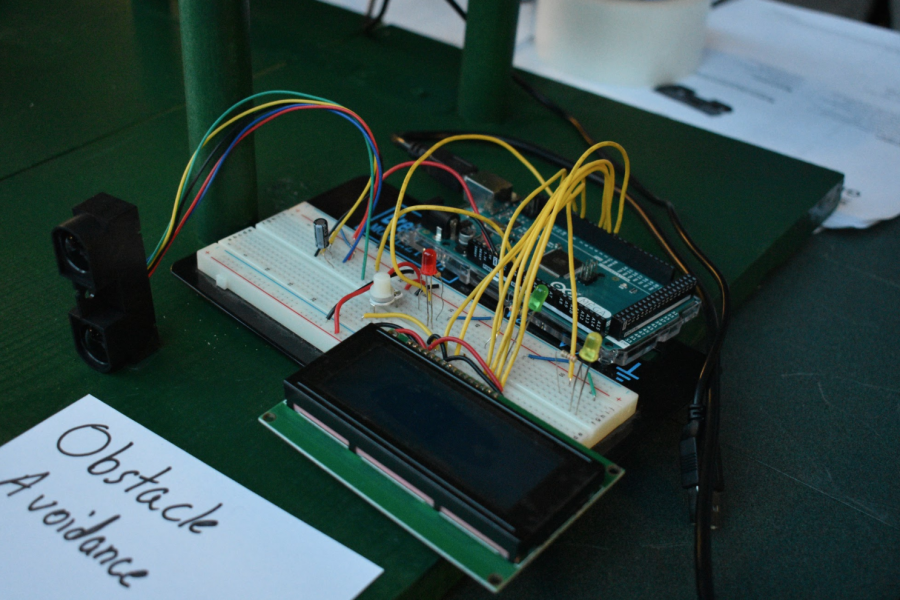Sac State students developing thought-controlled wheelchair
Dayla Cook – The State Hornet
The “Thought Chair” project focuses on providing a non-physical method of allowing one a degree of mobility with minimal other assistance. The project was one of 21 proposals that received funding from the University Enterprises, Inc. Campus Grants Program.
February 5, 2018
Four Sacramento State students are working on an innovative project called the Thought Chair, which would allow someone to control the mobility of their wheelchair with their thoughts.
Anthony Egbujor, David Gomez, Jesse Polio and Angel Figueroa hope to have the project near-perfect and ready for use by May.
Electrical and electronic engineering professor Russ Tatro said that the project focuses on providing a non-physical method of allowing one a degree of mobility with minimal other assistance.
Egbujor, the current senior design leader, said that the concept involves a band-like neural net that would be placed on the head and interact with the brain’s neural interfaces. The band would allow one to see the electrodes that travel to every part of the neural network that control movement. The band would interact with those neural interfaces, thus allowing a non-physical method of control.
[su_carousel source=”media: 38999,39000″ limit=”98″ link=”lightbox” width=”1600″ height=”900″ items=”1″ title=”no” pages=”yes” autoplay=”0″ speed=”400″][su_carousel source=”media: 36168,36123,36121,36118,36113,36110,36109,36108″ limit=”98″ width=”1400″ height=”1000″ items=”1″ title=”no” autoplay=”0″ speed=”400″][su_carousel source=”media: 34486,34485,34484,34483,34482,34481,34480,34478,34477″ limit=”98″ width=”1280″ height=”720″ items=”1″ autoplay=”0″ speed=”400″ title=”yes”]”[/su_carousel]
The project was one of 21 proposals that received funding from the University Enterprises, Inc. Campus Grants Program.
Proposals were chosen based on originality, impact on the campus community, level of student involvement, impact on learning and student success initiative, according to Angela Rader, the marketing director for UEI.
In addition to funding from UEI, Egbujor’s team received a donated wheelchair from the Ability Center of Sacramento.
Egbujor said the idea for the Thought Chair came to them last summer. In December, the team members began putting their ideas into practice.
“What we’ve done right now is about theoretical and not practical,” Egbujor said. “We’ve been able to use our own neural net that we got from a sponsor and we were able to control a screen and make it say different things using only our thoughts.
“Hopefully this semester, we’ll have it working on the wheelchair.”
Time isn’t the only concern, however. Egbujor said the team needs to make sure the neural net doesn’t affect someone’s brain.
“It’s very safe, its fully functional to use,” Egbujor said, “The only issue I have is that we don’t know what stress it can go through. I know it works with just my brain. We haven’t tested the limits with other people.”
With the finish line so close, Egbujor says the team may be looking to patent the project in the future.
“We don’t really know what the next step is,” Egbujor said. “But when we get there we’ll decide as a team.”

























































































































